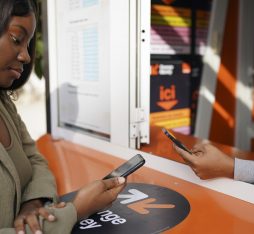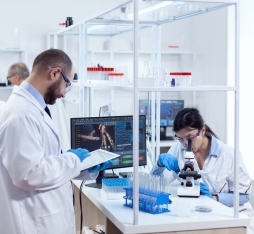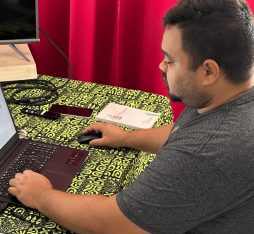“Testing a new vaccine using each person’s digital twin rather than a single model of a human is especially effective”
A digital twin is a digital representation of real-world entities — an object, system or process — that is synchronized with the real world. With sensors that relay information and two-way Internet of Things (IoT) object connections, this technology can synchronize the digital environment with the physical world and vice versa. Any change in the material world is reflected in the digital representation (the twin) and feedback gets sent in the other direction.
An Essential Building Block of the Metaverse
These intrinsic properties make digital twins one of the fundamental building blocks of the metaverse. While the metaverse may be able to bring us virtual worlds and experiences beyond what we can imagine, it will also have many uses in creating exact replications of reality. Imagine entering a fashion designer’s virtual store to try on clothes before buying them. It is a sure bet that you would prefer your avatar to match your actual measurements. These could be updated through data from photos taken on your smartphone or smart weighing scales, for instance. In professional settings, a meeting in the metaverse would be all the more productive if participants could interact with an exact replica of the company’s equipment and information system. In technical training programs, technicians can already use applications to operate 3D representations of complex systems. In the future, we will be able to recreate a complete maintenance workshop in the metaverse, filled with digital twins of machines needing to be serviced, all the necessary tools, and potentially connected with or mapped onto a real workshop so that any kind of maintenance can be carried out remotely. In the commercial and technical sectors, and in B2C and B2B, the uses of digital twins in the metaverse are only just beginning to be explored.
Visualization, Reconfiguration Tests — A Whole Host of Applications
However, the idea of digital twins is not new. It first appeared in the automotive and aerospace industries to optimize the operation and maintenance of industrial equipment through digital replicas. Since then, the use of digital twins has expanded to other areas such as urban planning, construction, logistics and medicine. Some uses are simple, such as digitizing information about a product or an industrial machine to map out how it changes throughout the product’s life cycle. Another use includes creating a 3D visualization of a city that allows citizens or economic players to explore this visual representation and discover future urban projects.
Other uses are more sophisticated. For example, time and money can be saved by using a car’s digital twin to simulate its behavior so the right setup can be identified. This can be achieved by changing the virtual car’s configurations and reproducing them when constructing the future car.
The potential uses of digital twins for the human body are particularly revolutionary. “Vaccines have different effects on everyone,” explains Thierry Coupaye, Head of Research on IoT at Orange Innovation. Testing a new vaccine using a person’s digital twin rather than a generic model of a human being is especially effective and helps accelerate its time to market.” In the future, when used with Big Data and artificial intelligence technologies, digital twins will allow us to predict how physical entities will behave. There are unlimited applications, as shown by this major European project to create a digital copy of the ocean.
A Major Research Focus
At Orange Innovation, research on the concept of digital twins started in 2016 as part of the research carried out into the Internet of Things. With this in mind, a collaborative research platform called Thing’in was created to allow concrete use cases to be developed from the digital representation of objects. “We are working on very advanced projects in areas such as Industry 4.0, logistics, construction across Europe and even smart cities to allow residents to report infrastructure faults in the city, such as a tree branch blocking a road or a broken bridge,” explains Thierry Coupaye.
“There are several visions of the metaverse,” Coupaye says. “Some players have fundamentally synthetic visions involving a frozen snapshot of the physical world like Meta (Facebook) or Roblox, while others view the metaverse as an evolving picture of reality that is synchronized with reality. Supported by key players like Microsoft, Nvidia, Epic Games (creator of Fortnite) and Niantic (creator of Pokémon GO), this second vision features the digital twins that enable real-time synchronization with the physical world.”
Beyond the technology needed to “give life to” digital twins in the metaverse, the question of usage is key. According to Coupaye, “it is crucial to explore the concrete applications and commercial solutions that might one day enter the market.”











